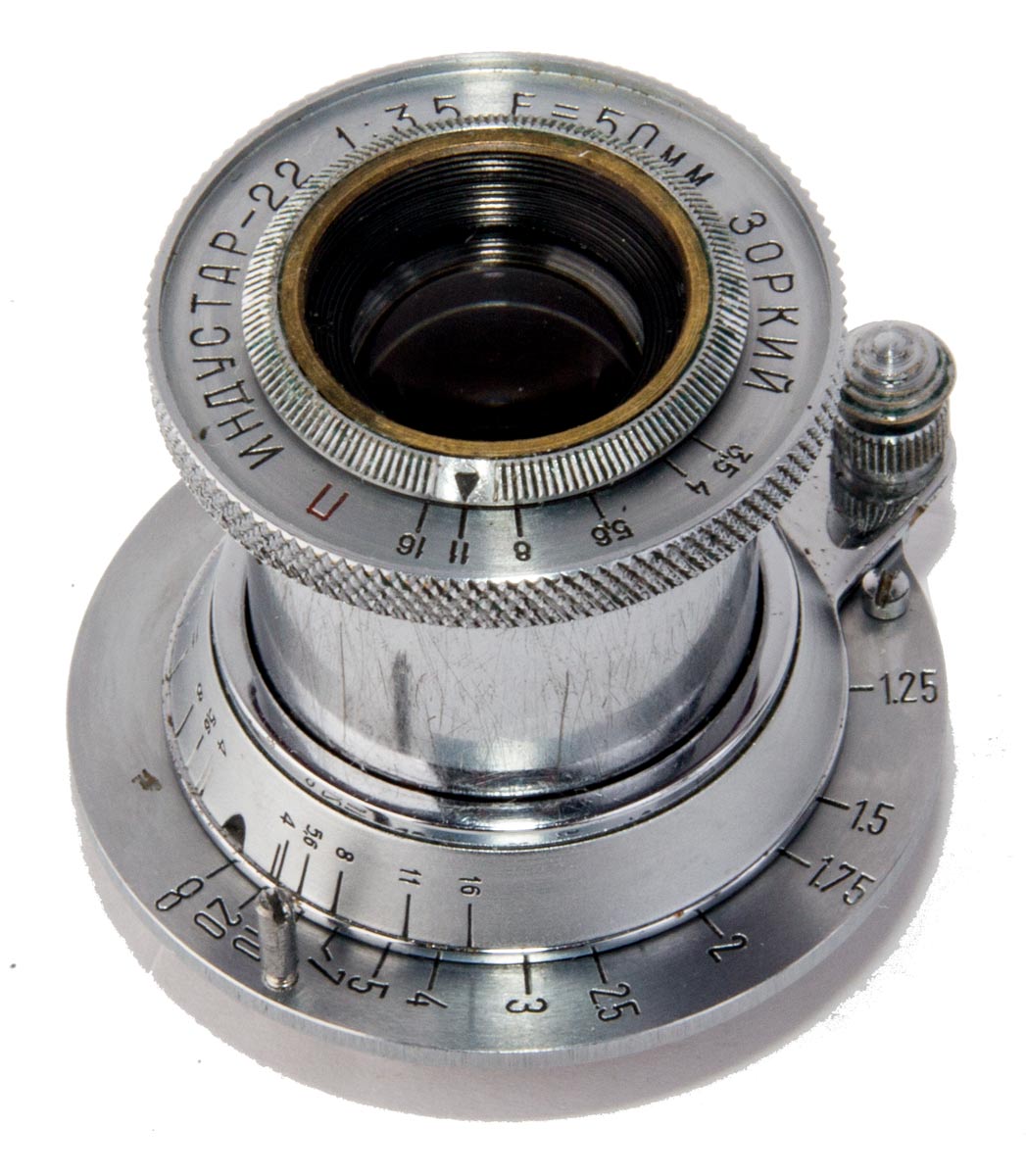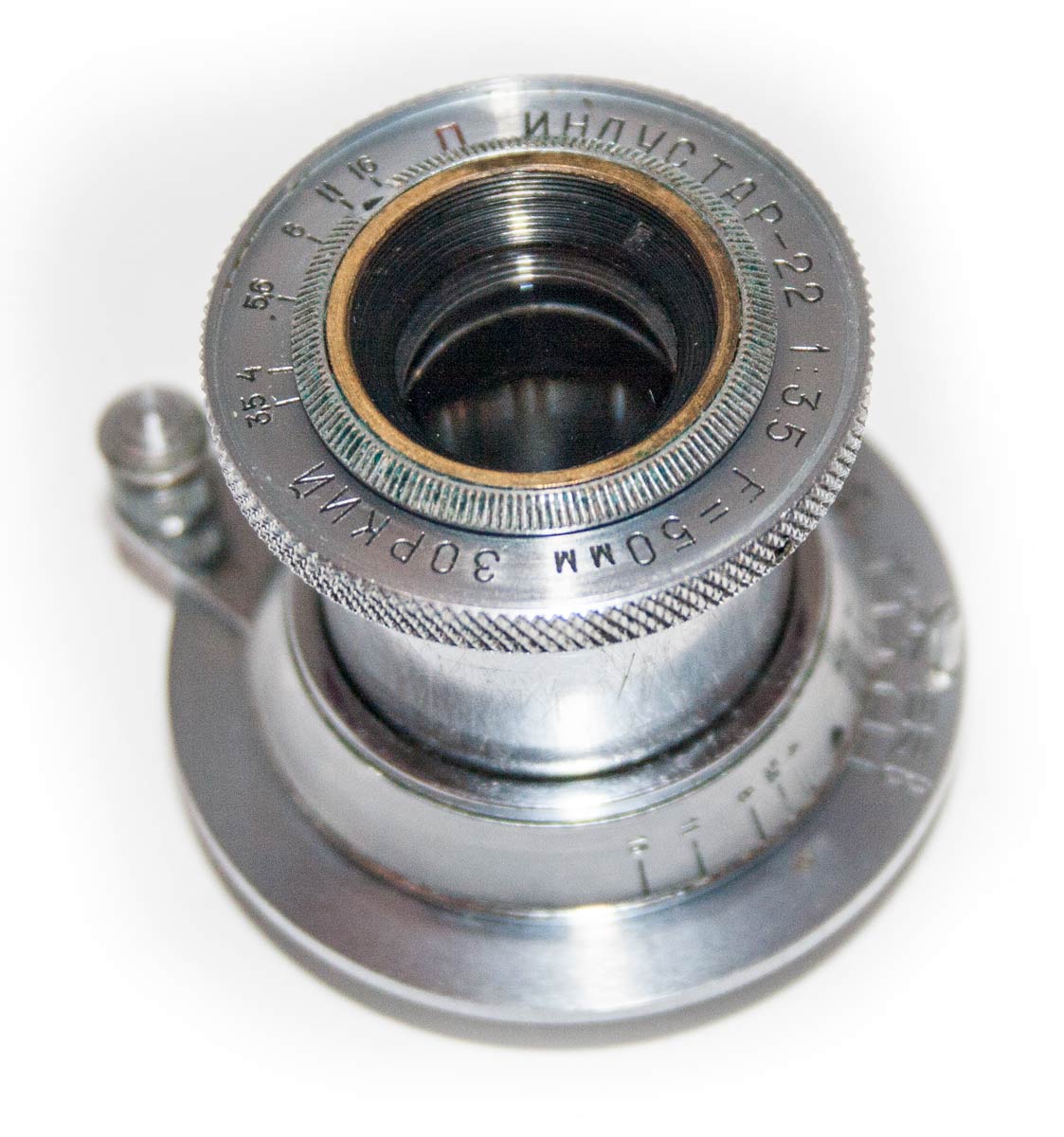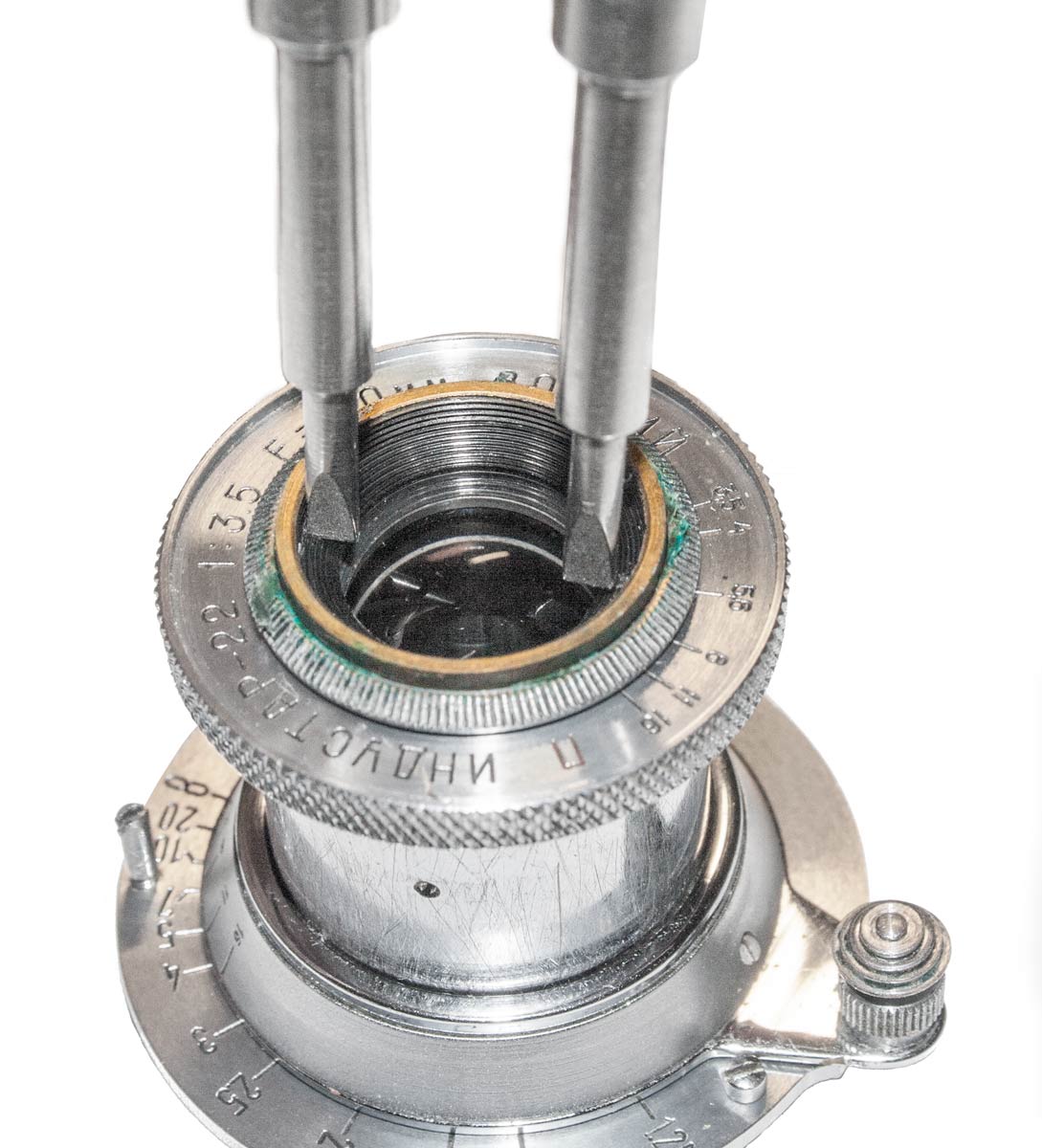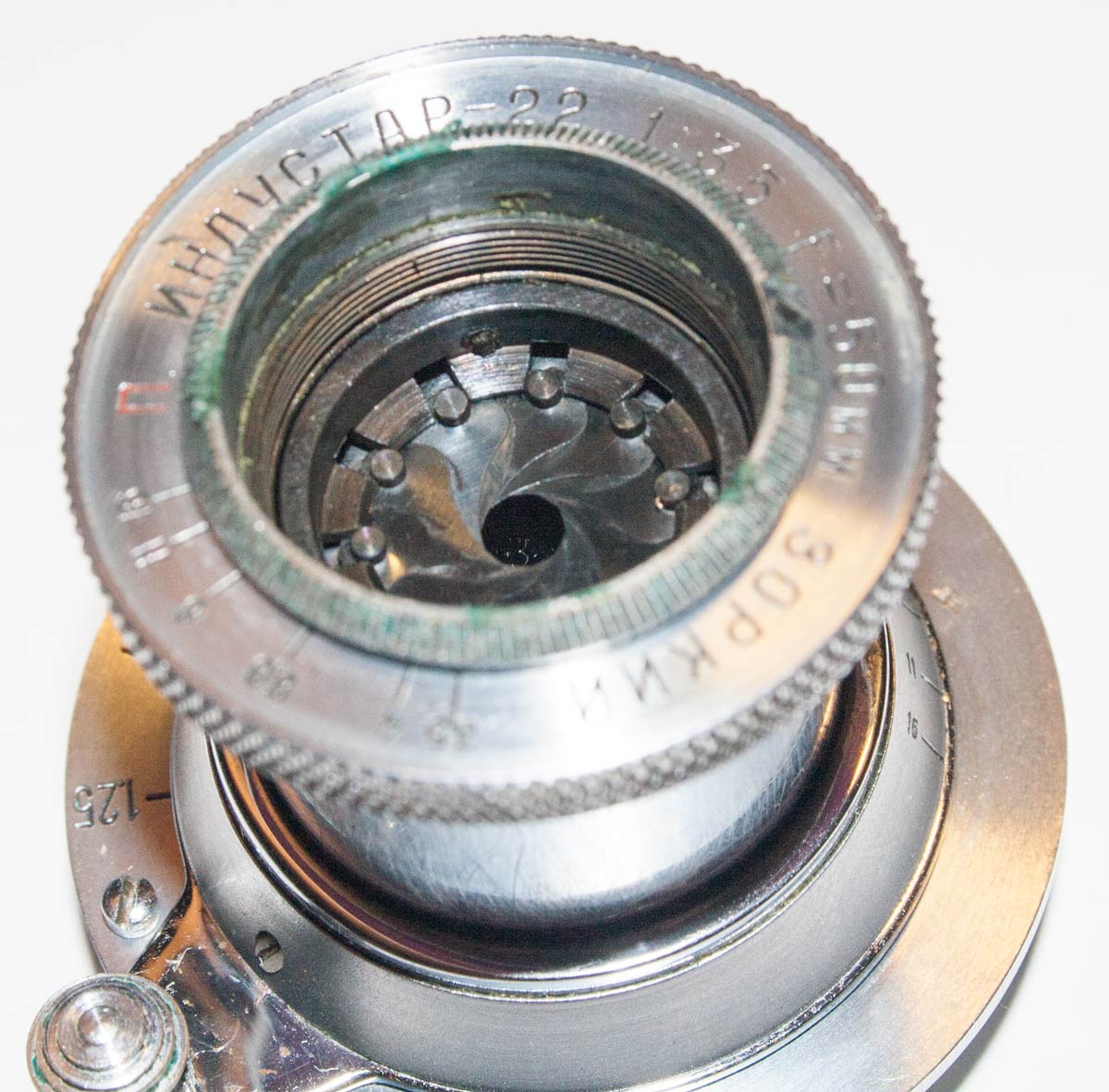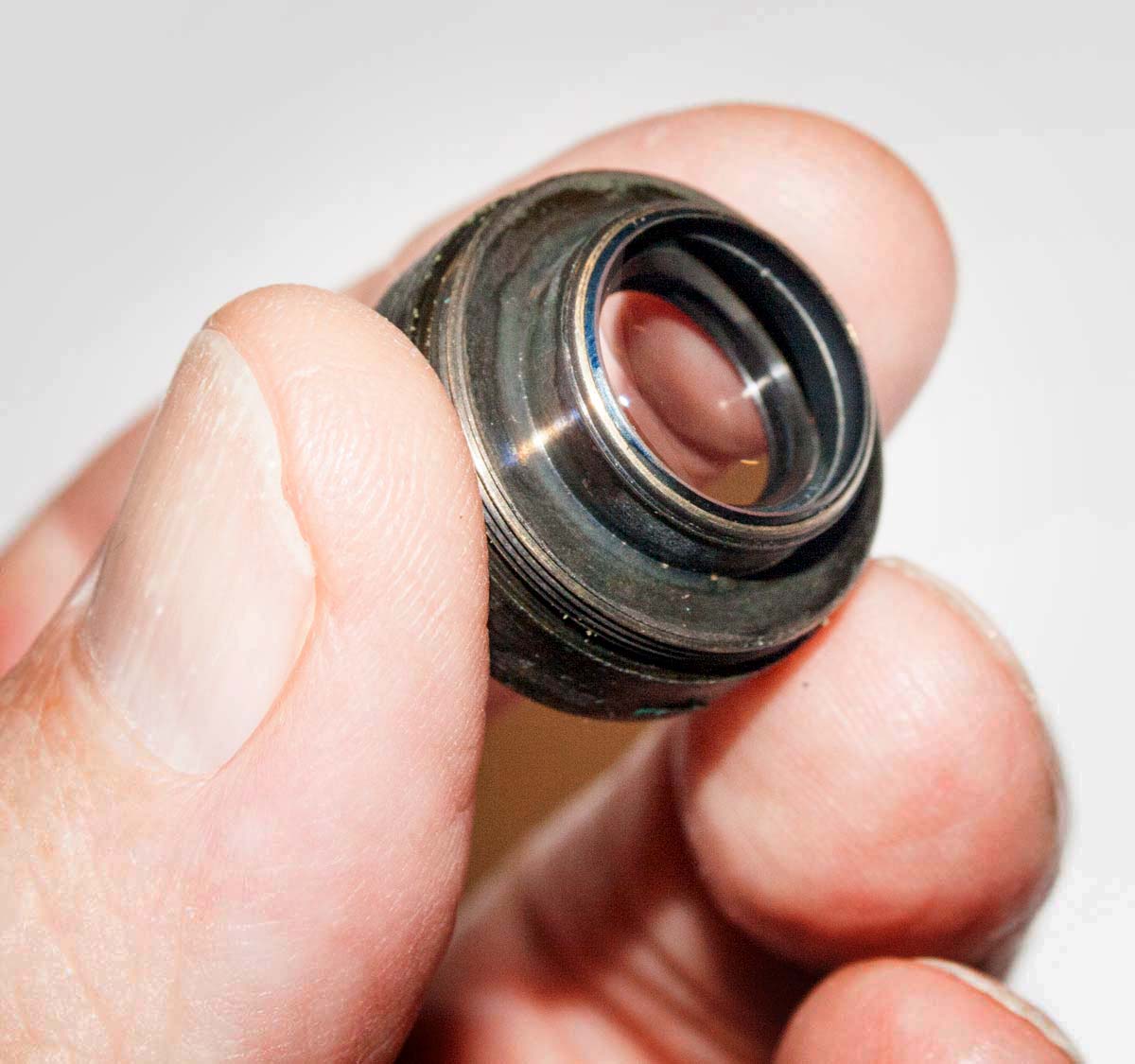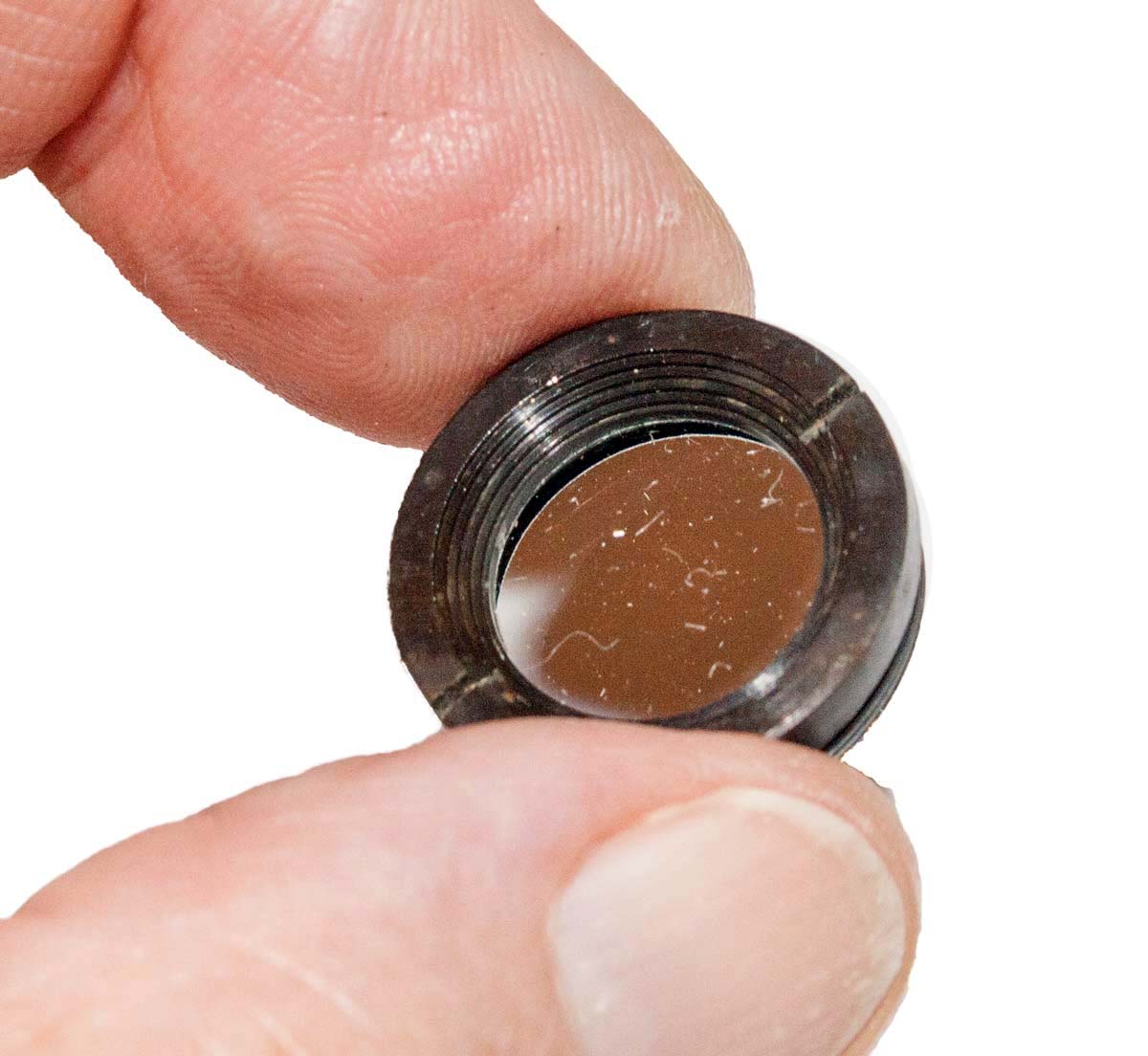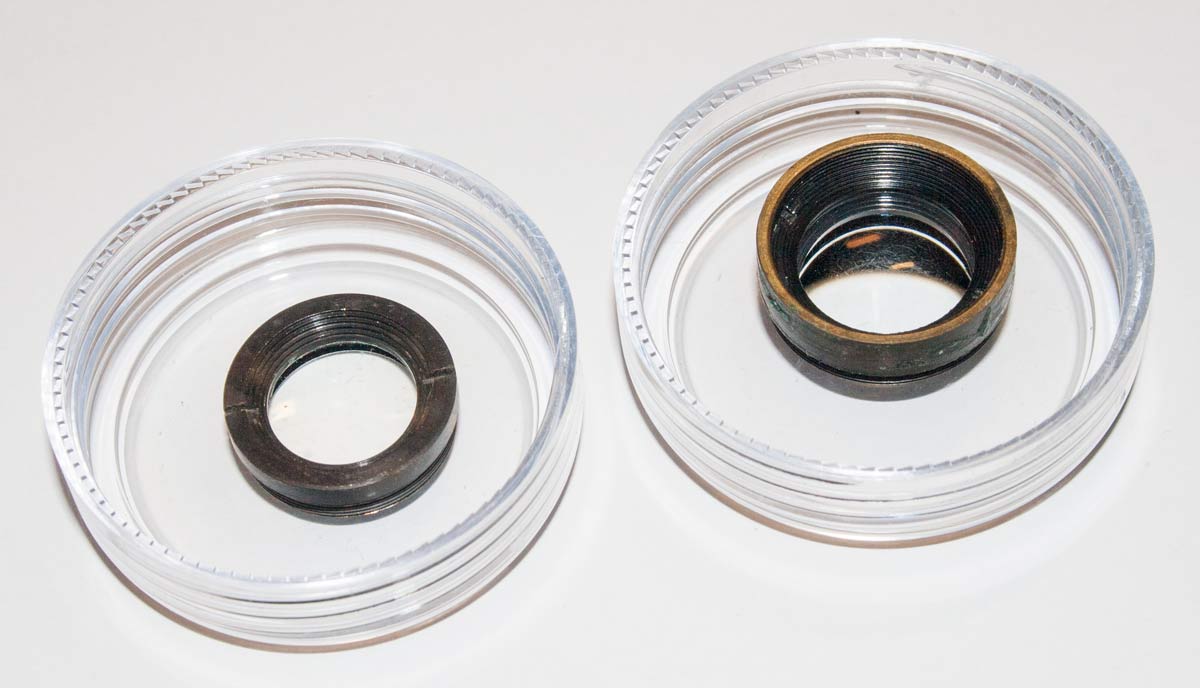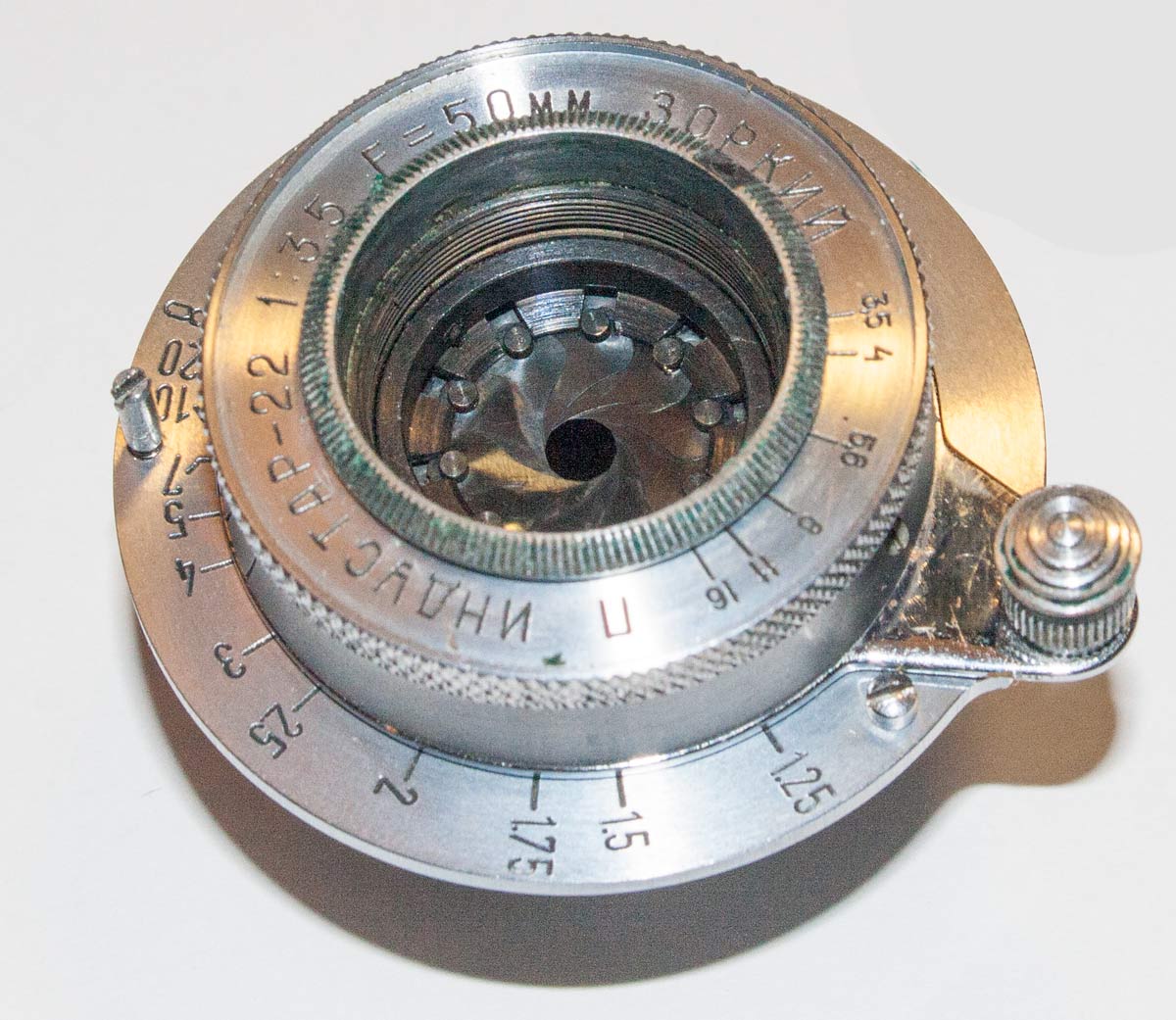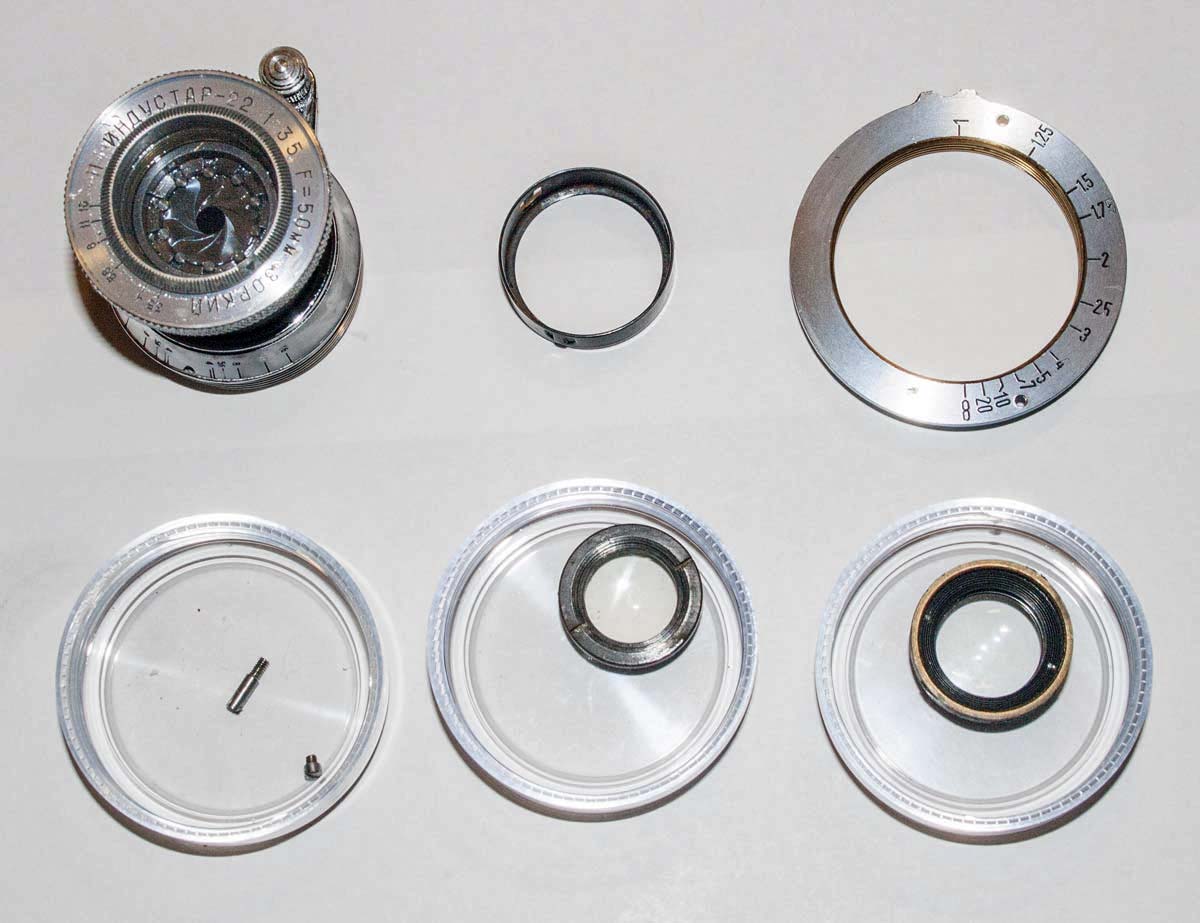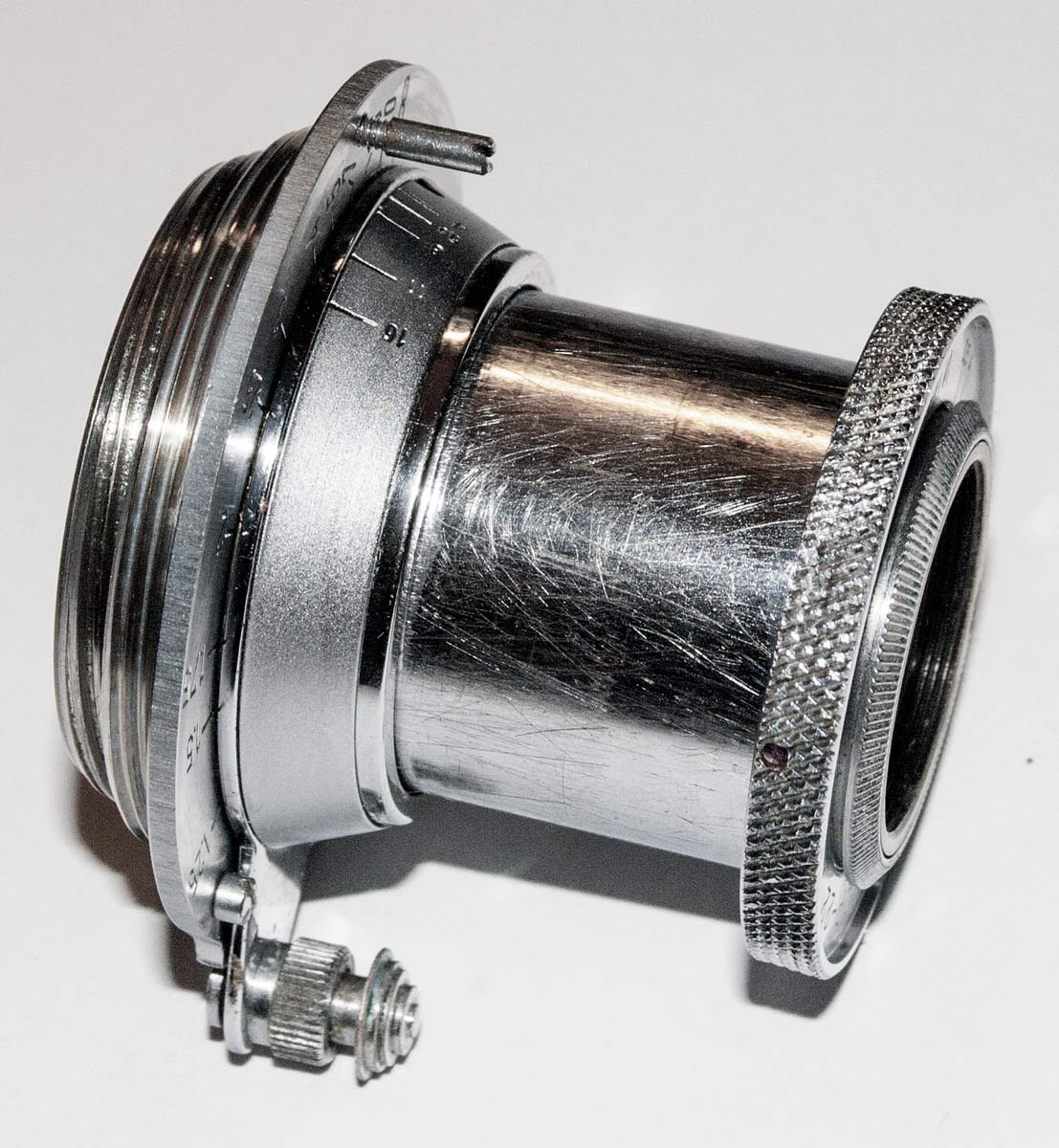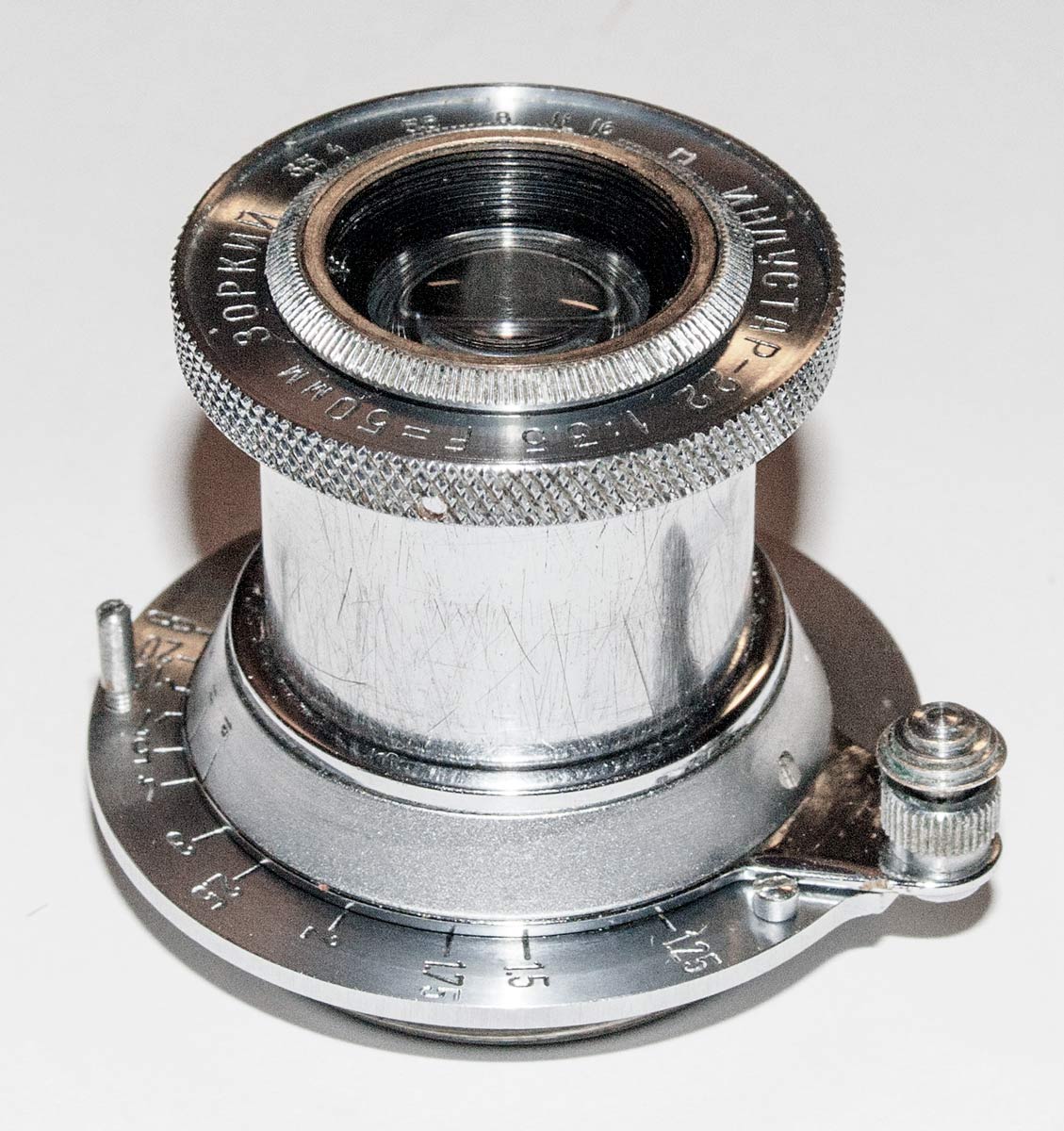I recently acquired a Zorki 1b camera and it came with an Industar-22 50mm f/3.5 collapsible lens. This lens seemed to be in good to very good condition but the iris diaphragm was not working. There was no visible damage and so it was pretty sure to be solidified lubricant. This view was reinforced by evidence of brass corrosion. There was a waxy green residue around the brass sleve visible on the front of the lens.
Lens iris blades can be freed by the use of a good grease cutting solvent. But a word about solvents. Keep them off the lens elements. That means we have to remove the lenses before we get the solvent out.
Secondly, use the mildest solvent that will do. Try water. Then try Windex or just vinegar. If these fail, then go to isopropyl alcohol and if that fails, then go to a non-residue grease remover. But try your solvent carefully until you are satisfied that it will not damage the parts you are working on.
And stay away from products like Goof-Off or Gunk Remover! These contain strong solvents that will remove paint and dissolve plastic. They are for special jobs and even then they must be used with great care. If you are not familiar with them, don’t use them at all.
Our first task is to remove the front group from the lens barrel. Set the lens on its base with the top upwards.
We then use an adjustable camera spanner to screw the front group out. These lenses come out as a group.
Once the front lens group is out we turn the lens over and remove the rear group which also comes out as a unit. This leaves the lens barrel and iris in a unit. With the lenses out we can safely begin using our solvent. Many people use lighter fluid but I have bought a non-residue grease solvent at an automotive supply store and it works fine.
The rear element after removal from the lens barrel. It looks dirty but we clean when we reassemble!
The front element, when it came from the lens barrel was covered in hardened grease. To the left is the lens group as it came out. You can see the accumulation of grease on the outside of the housing. This was removed by using absorbent paper towel and degreaser and wiping several times, being careful not to allow liquid solvent to get on the lens.
Notice the scratches on the lens surface. They are not easily visible to the eye. I did not notice them till I looked at this image. I then used a mignifier and was able to see them directly on the lens. They are uniform across the whole surface and that makes me wonder if they are left over from an incomplete polishing job during manufacture. I imagine they will cause flare and lack of contrast in images taken with this lens.
The Industar-22 disassembled and ready for cleaning. Keep the parts clearly labelled and secure so you don’t lose any and can reassemble the lens when cleaning is finished. You can see the little plastic cups I use for small parts to keep them safe, clean and organized.
To do the actual cleaning I set the lens barrel in an aluminium cup and began to apply the solvent with a syringe and gently used a soft brush to loosen dirt. You must be very careful with the iris blades themselves. I normally just work the iris open, closed, open, until it frees up which it did quickly in this case.
By the time I was finished with the iris there was a fair amount of solvent in the cup and I used it to clean the rest of the lens including the focusing threads. I then dried the outside with clean paper towel. But the iris blades themselves I let air dry. I speed this process along by setting the lens barrel on the exhaust fan grille on the top of my computer: steady flow of warm air! Do not reassemble the lens until it is completely dry.
Once everything is clean and free of old lubriant and dirt we begin the reassembly. Do not lubricate the iris blades. They don’t need it. Just apply a small amount of light grease to the focus threads so that the lens turns smoothly in the barrel.
When I was finished the lens looked pretty good for its age. Certainly not a mint example but I am happy with it. And it all functions smoothly now.
I will be interested to see what this lens is capable of. The number if minute scratches on the front element is not encouraging. As I said, I suspect it will exhibit low contrast and be subject to flare. However, with a little love and coaxing it may produce reasonable images. We shall see.


